College of Wooster students strive to save deteriorating historic Compton family house
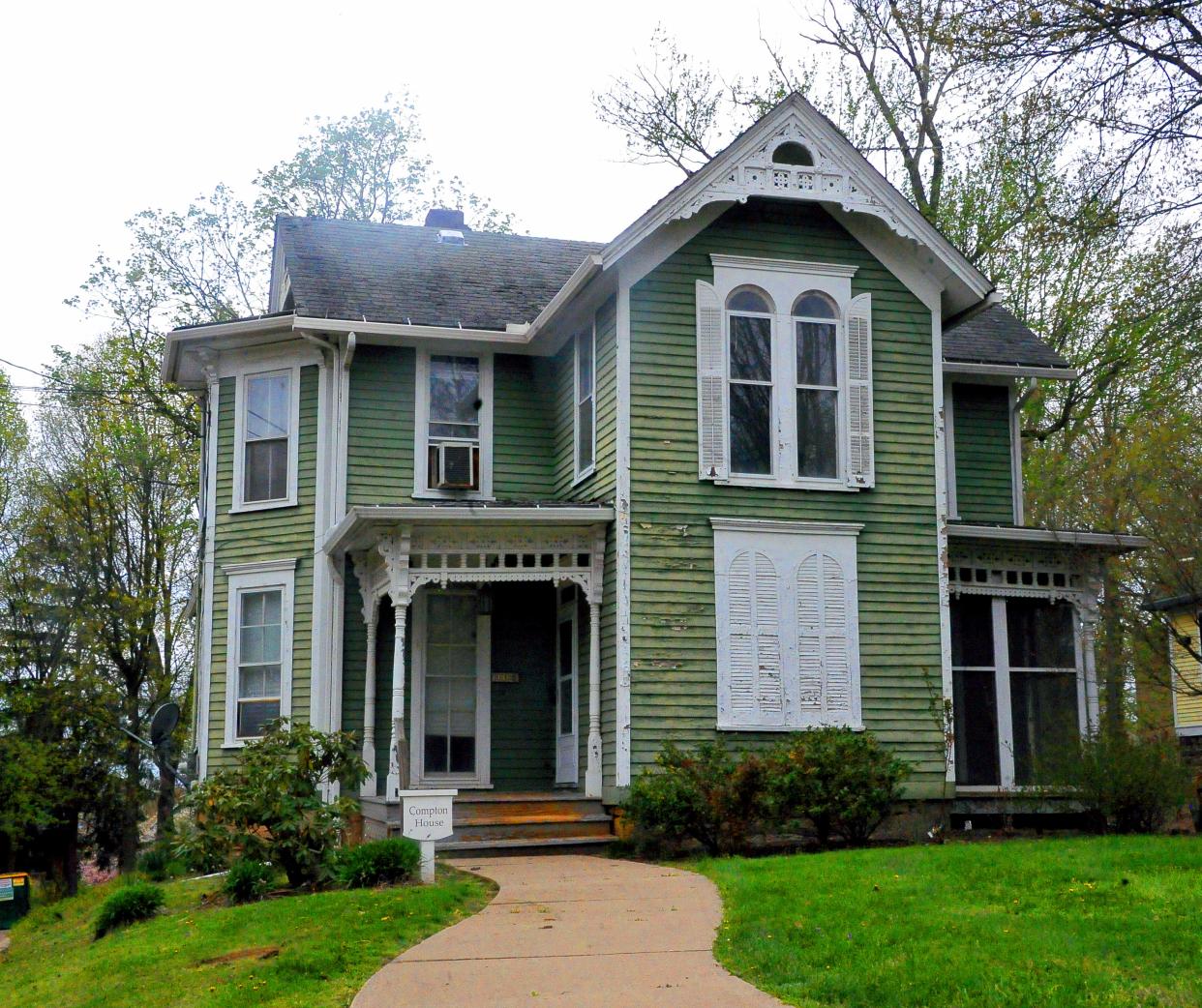
- Oops!Something went wrong.Please try again later.
WOOSTER – The Compton House, a historical landmark, is in disrepair.
Roof tiles crumble into the grass and the stairs leading to the house.
Spiders peak out of webbed homes in the cracked porch ceilings likely caused by water damage and time.
The supports holding those ceilings up are riddled with pealing white pain while debris from above scatters the front and back porch.
Wooster Inn: Historic Wooster Inn reduced to rubble, College of Wooster seeks public input for the site
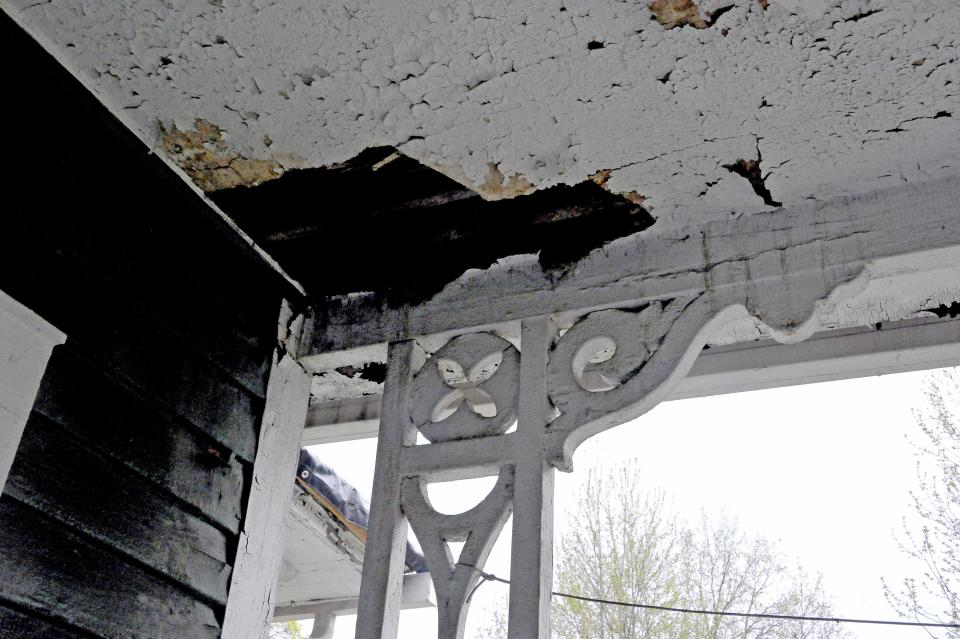
Inside the curtains are pulled. All that can be seen is an empty kitchen in the back and carpeted floor in front.
The College of Wooster has owned the Compton House at 816 College Ave. since 1961. But over half a century later in 2020, it was largely left empty as its condition deteriorated.
Now, five first-year college students hope to save the historic building and turn it into a center for local history.
History of the Comptons: The parents
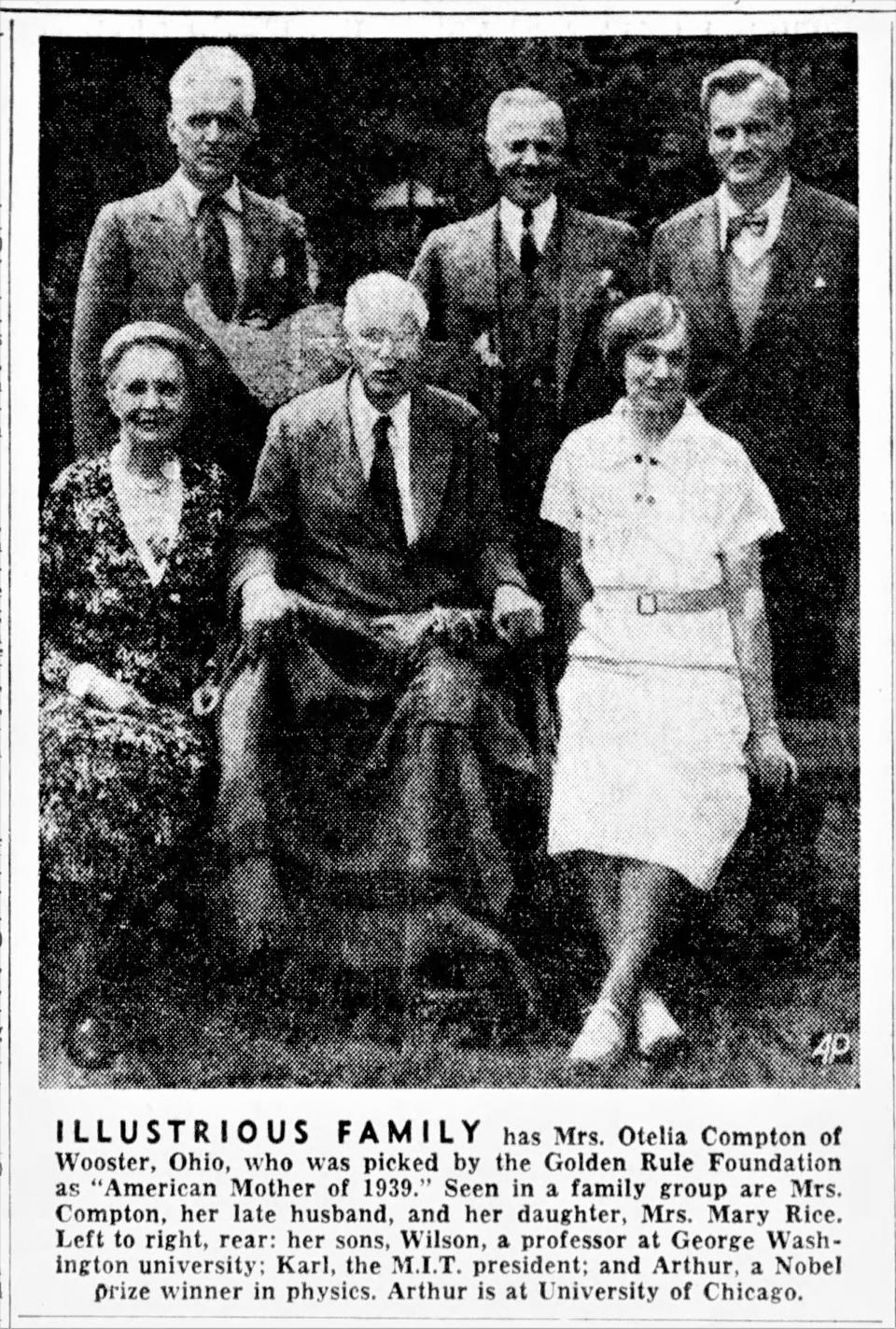
Before the College of Wooster acquired the home, it had nearly a century of history behind it.
But when it was recognized as a Wayne County Historical Landmark in 1976, Susan Zimmerman said it was not because of its architecture or age.
It was "by virtue of the distinction achieved by the family that lived in it," said Zimmerman, a member of the Wayne County Historical Society's Documents and Archives Committee.
History: Wooster High senior earns Daughters of American Revolution honor, scholarship
The family lived in the home from 1891 to 1937, when it was willed to the College of Wooster by the family patriarch Elias Compton. He reserved it for his daughter and her husband, who lived there until 1961.
Compton was a Presbyterian pastor and dean of the college where he taught philosophy for 40-plus years, Zimmerman said.
His wife Otelia Compton was named American Mother of the Year in 1939 and was quoted of saying, "A child is not likely to learn good habits from the parents unless the parents learn good habits from their parents."
Years later, she earned a Ph.D. in law from Western College at the age of 74, Zimmerman said.
"These two were the parents of extraordinary children, three sons: Karl, Wilson, Arthur, and one daughter, Mary," she said. "All graduated from The College of Wooster and lived in the house on College Avenue."
History of the Comptons: The two eldest and one youngest
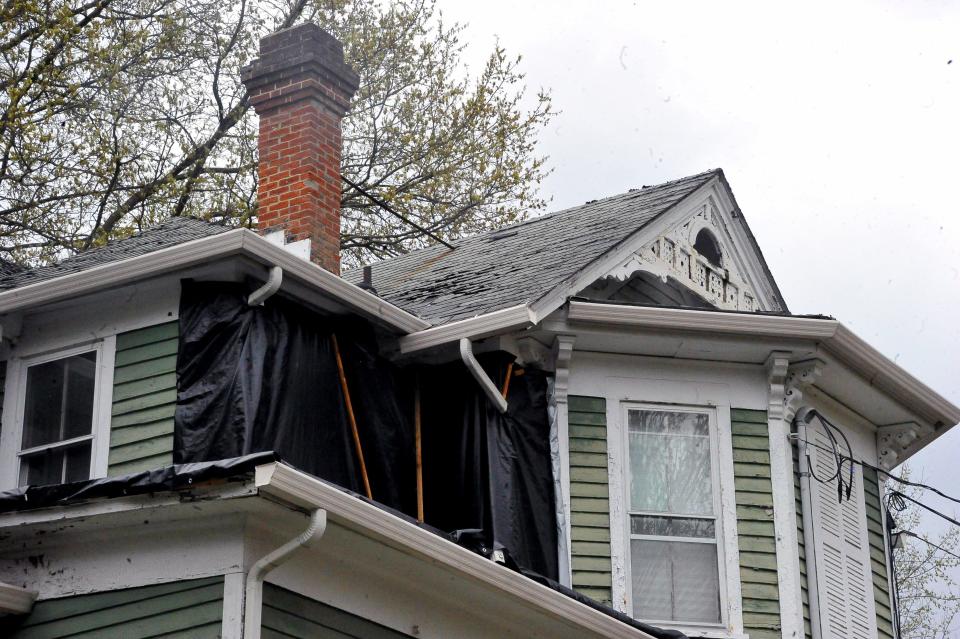
Their eldest child was Karl Compton, who was born in 1887 and died in 1954. He was the head of the physics department at Princeton where he helped develop sonar technology.
In 1930, he was named the president of the Massachusetts Institute of Technology, where he helped establish the MIT Radiation Lab, Zimmerman said.
More on the inn: The Wooster Inn is on its way out. Some residents hope to reverse the college's decision
Born in 1890 was their second child, Wilson Compton. He graduated from Princeton in 1915 with a Ph.D. and taught economics at Dartmouth for one year before working for the Federal Trade Commission, Zimmerman said.
Compton eventually became the first secretary-manager for the American Forest and Paper Association until 1944 when he was named the fifth president of Washington State University at Pullman.
There he remained until his death in 1951.
The youngest child, Mary Compton, later known as Mary Rice, graduated from Wooster in 1911 and taught for two years; one in Ohio and another in Illinois.
In 1913, she married Charles Herbert Rice who took her to India where they served as missionaries in Christian educational facilities, Zimmerman said.
After India, the couple moved back home to their family house on College Avenue. There they remained until they left in 1961, she said.
History of the Comptons: The middle child
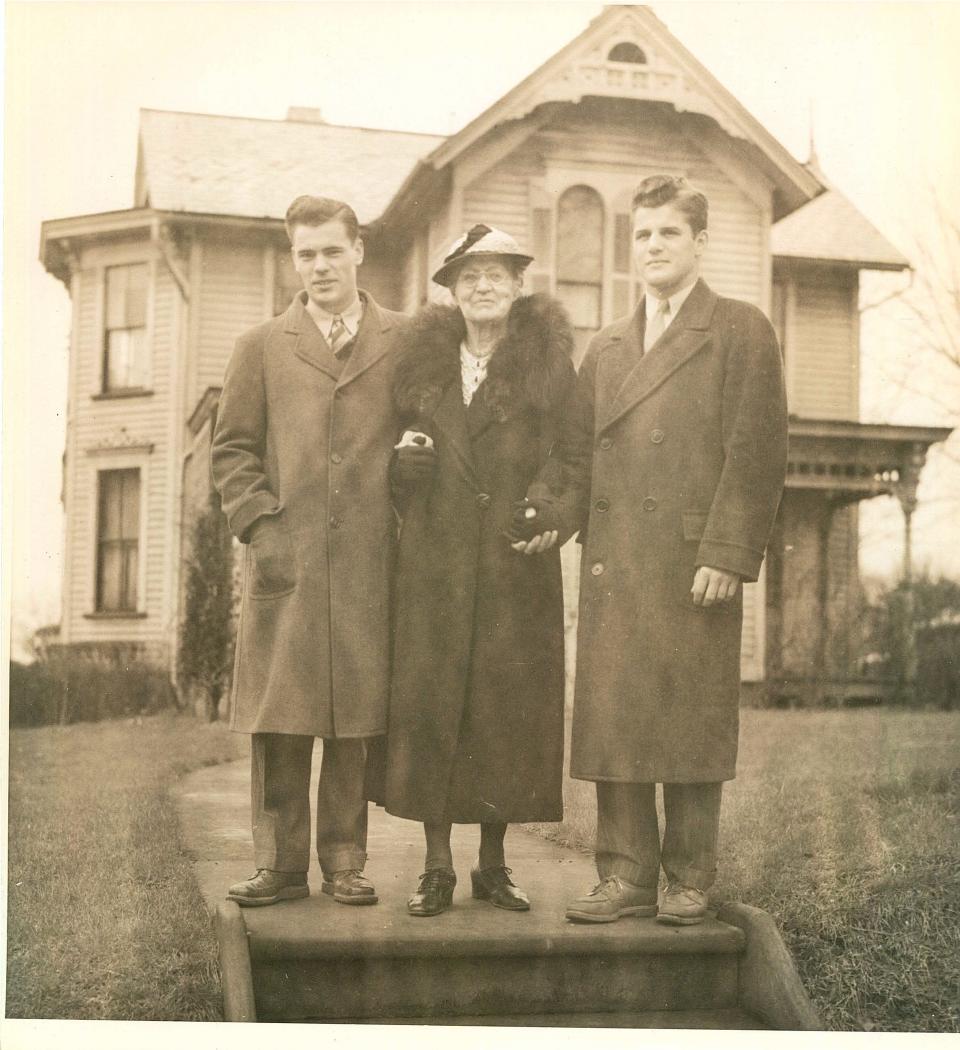
The middle child, Arthur Compton, was born in 1892 and is considered the most successful Compton.
In the six years after he graduated from Wooster in 1913, he studied postgraduate school at Princeton University, taught physics at the University of Minnesota and became a research engineer at Westinghouse Lamp Co. in Pittsburgh, Zimmerman said.
In 1919 he studied at Cambridge University in England, where he was first exposed to the science of splitting the atom.
One decade after graduating from Wooster, he received the Nobel Prize in physics for discovering a science term named after him: the "Compton Effect." This discovery supported Albert Einstein's particle theory of light.
"Jointly, he shared the prize in physics with Scottish physicist, Charles Thomson Rees Wilson," Zimmerman said. "Compton used Wilson’s 'cloud chamber' to assist in detecting, tracking, and identifying x-ray particles."
Following a stint at Washington University in St. Louis, he became a physics professor at the University of Chicago from 1923 to 1945, where became involved in the Manhattan Project.
Ernest Lawrence, another Nobel Prize recipient, initiated the project with Compton, who became the administrator and advisor. From 1942 to 1945, they developed the first atomic bomb with a team of scientists.
Zimmerman said Compton served on the scientific panel of the Interim Committee that recommended military use of the bomb on Nagasaki, Japan, in August 1945.
The following two decades saw him pen scientific papers and books and receive awards for his various efforts.
Compton died in Berkeley, California, from a cerebral hemorrhage on March 15, 1962.
Hoping to save a historic landmark
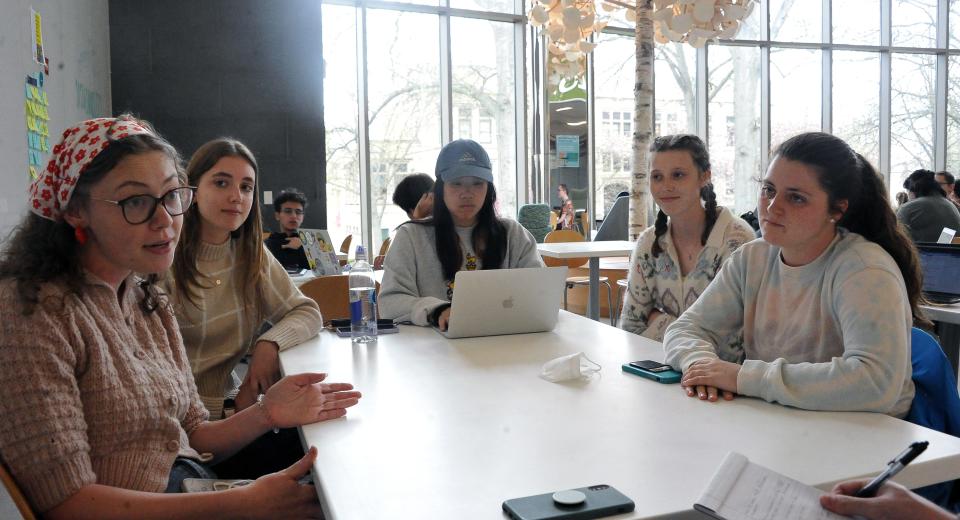
Today, the house is surrounded by student housing to the north, a garden to its south and a college parking lot on two sides.
It was in this parking lot that first-year college student Kyra Martino discovered the house.
"I was behind the house and saw that it was called the Compton House," Martino said. "I looked into it and got interested."
She then told her four first-year friends — Madison Ackley, Alexa Michael, Katherine Shue and Lily Hinkley — who quickly delved into a nearly two-semester-long research project that took them into the college archives.
There they discovered Arthur Compton and his mother Otelia Compton.
"Their whole family has so many stories," Ackley said. "They connected to so many parts of the world and were influential."
After doing their research, Ackley said they approached the college with a proposal: to renovate and turn the home into an early 1900s historic and educational space.
"The house is already a historic landmark, so why let it fall into disrepair?" she said. "This is a historical house connected with so many amazing people."
The students said the college has a pattern of losing historical buildings, referencing the recent demolition of the Wooster Inn. Saving this building could break that pattern.
Ongoing talks with the college
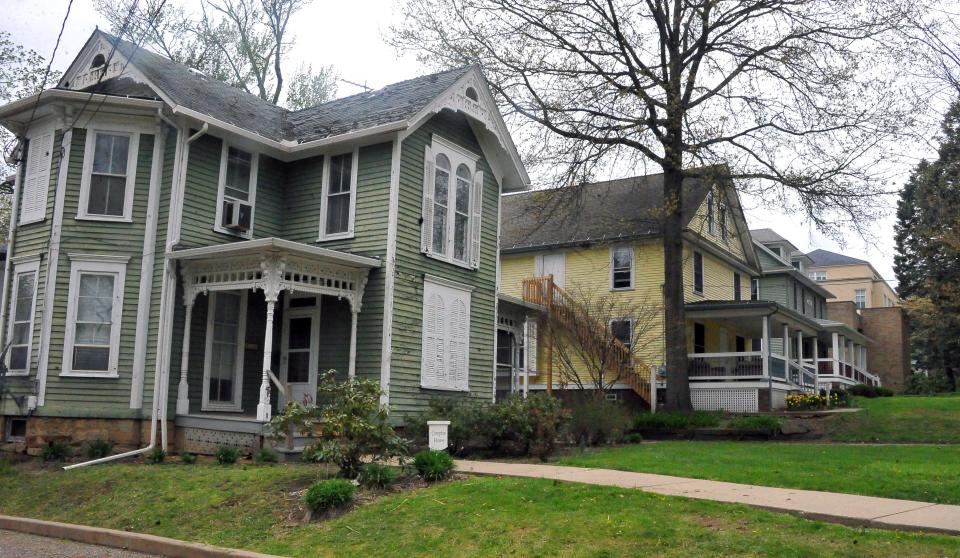
In April, the five students met with the Advancement Office, which does alumni and community fundraising for the college.
While no concrete plans were agreed upon, Ackley said the college seemed receptive during their meeting.
To save the structure, they were told it would take public support and fundraising, she said.
"We've connected with different departments like the History Department," Ackley said. "They seemed very interested."
Despite the positive responses these students received, the College of Wooster dismissed any plans for the building, according to a public statement.
"We are not actively discussing or making plans regarding Compton House at this time and do not have enough information to comment on the potential for this specific structure to support any future activities," the college stated.
The college said it would continue to monitor the structural issues of the building with the help of engineers.
Reach Bryce by email at bbuyakie@gannett.com
On Twitter: @Bryce_Buyakie
This article originally appeared on The Daily Record: Five college students hope to save a historic house from falling apart

